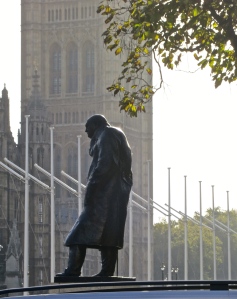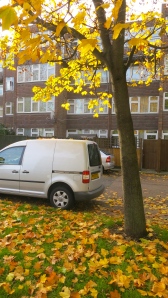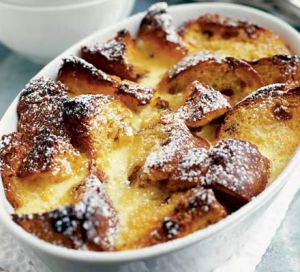13th November 2013
Jackie drove me to and from Southampton Parkway today for my visit to Norman. I took my usual Green Park route from Waterloo as far as Piccadilly, which I crossed and continued up Old and New Bond Streets to the next station on the Jubilee Line.  It was high tide on a choppy Thames as I approached Westminster Bridge. Gulls on the embankment wall were being tempted by one woman to provide photographic material for another, younger, one – and for me.
It was high tide on a choppy Thames as I approached Westminster Bridge. Gulls on the embankment wall were being tempted by one woman to provide photographic material for another, younger, one – and for me. 

 They were both amused at my efforts. The fact that we did not understand each other’s languages was no barrier to communication.
They were both amused at my efforts. The fact that we did not understand each other’s languages was no barrier to communication.  On 1st November 1973, Queen Elizabeth II gave the honour of unveiling the statue of Sir Winston Churchill in Parliament Square to the great man’s window, Baroness Clementine. The sculpture, gazing across from the green to the Parliamentary arena that its subject so dominated during the years of the Second World War, captures his distinctive posture so well that a silhouette is all that is needed for recognition. Ivor Roberts-Jones was the artist. The green grass still largely uncovered by leaves in St James’s Park, provides the carpet for crows, squirrels, waterfowl, and humans.
On 1st November 1973, Queen Elizabeth II gave the honour of unveiling the statue of Sir Winston Churchill in Parliament Square to the great man’s window, Baroness Clementine. The sculpture, gazing across from the green to the Parliamentary arena that its subject so dominated during the years of the Second World War, captures his distinctive posture so well that a silhouette is all that is needed for recognition. Ivor Roberts-Jones was the artist. The green grass still largely uncovered by leaves in St James’s Park, provides the carpet for crows, squirrels, waterfowl, and humans.  Although the London planes slough their bark throughout the year, their leaves are retained a little longer than yesterday’s gorgeous maples. The reason I know about the bark is a little embarrassing. Some time around 1980, I was gazing thoughtfully out of my Westminster office window when I noticed planes in the street outside shedding their skin. Wondering whether this was a consequence of the hot summer and something should be done about it, I telephoned the department responsible for their maintenance to alert them of this fact. ‘They are meant to do that’, was the reply. ‘That’s how they get rid of city dirt’.
Although the London planes slough their bark throughout the year, their leaves are retained a little longer than yesterday’s gorgeous maples. The reason I know about the bark is a little embarrassing. Some time around 1980, I was gazing thoughtfully out of my Westminster office window when I noticed planes in the street outside shedding their skin. Wondering whether this was a consequence of the hot summer and something should be done about it, I telephoned the department responsible for their maintenance to alert them of this fact. ‘They are meant to do that’, was the reply. ‘That’s how they get rid of city dirt’. 
 Neasden’s trees were making a valiant effort to brighten its unattractive blocks of flats, but no amount of fallen leaves could have invited carpet slippers onto the ramshackle surface of the Neasden Lane pavements. Norman served a tender, well marinaded beef stew and pilau rice for lunch. Not having used his Le Creuset casserole dish for some months – since last Christmas as it turned out – he was surprised, when removing its lid, to find it contained half a panettone. He also had a jar of jam he wanted to finish up. Consequently the planned bread and butter pudding became one of panettone and jam, baked with a custard topping, and served with cream.
Neasden’s trees were making a valiant effort to brighten its unattractive blocks of flats, but no amount of fallen leaves could have invited carpet slippers onto the ramshackle surface of the Neasden Lane pavements. Norman served a tender, well marinaded beef stew and pilau rice for lunch. Not having used his Le Creuset casserole dish for some months – since last Christmas as it turned out – he was surprised, when removing its lid, to find it contained half a panettone. He also had a jar of jam he wanted to finish up. Consequently the planned bread and butter pudding became one of panettone and jam, baked with a custard topping, and served with cream.  The peel in the brioche type bread made an excellent substitute for marmalade which is sometimes spread on the bread of our normal version. I thought this an agreeably inventive variation on a theme. The choice of wine, appropriately, was an excellent valpolicella. My journey home was uneventful. Seeking an illustration of panettone on Google, I discovered the BBC posh panettone bread and butter pudding, and am able to insert a picture of this. It doesn’t have custard or jam, so I consider my friend could legitimately take out a patent.
The peel in the brioche type bread made an excellent substitute for marmalade which is sometimes spread on the bread of our normal version. I thought this an agreeably inventive variation on a theme. The choice of wine, appropriately, was an excellent valpolicella. My journey home was uneventful. Seeking an illustration of panettone on Google, I discovered the BBC posh panettone bread and butter pudding, and am able to insert a picture of this. It doesn’t have custard or jam, so I consider my friend could legitimately take out a patent.








